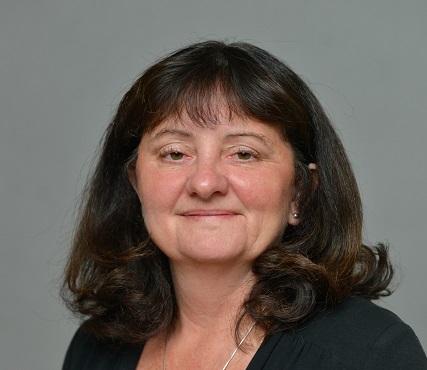
3D Insights on Melt Pools in Additive Manufacturing: Implications for Alloy Design
Tresa M. Pollock, Professor
Materials Department, UC Santa Barbara
Additive manufacturing promises new pathways for integration of advanced alloys with complex structural component design. Control of structure requires a more detailed understanding of the processes that occur at the individual melt pool scale and their superposition as melting occurs on a layer by layer basis. A new technique developed at UCSB, TriBeam tomography, has been employed to acquire chemical, structural and misorientation information on nickel and stainless steel alloys, printed by electron beam and laser powder based processes, respectively. The persistence of grains layer to layer due to remelting / nucleation has been studied as a function of raster vs spot melting. The size and distribution of carbides and nitrides is also characterized and they experience considerable refinement compared to conventional melting processes. Finally, EBSD indicates the accumulation of large misorientations during printing that are directly related to the alloy solidification path. Implications for alloy design are discussed.
About the Speaker
Tresa Pollock is the Alcoa Professor of Materials at the University of California, Santa Barbara. Pollock’s research focuses on the mechanical and environmental performance of materials in extreme environments, unique high temperature materials processing paths, ultrafast laser-material interactions, alloy design and 3-D materials characterization. Pollock graduated with a B.S. from Purdue University in 1984, and a Ph.D. from MIT in 1989. She was employed at General Electric Aircraft Engines from 1989 to 1991, where she conducted research and development on high temperature alloys for aircraft turbine engines and co-developed the single crystal alloy René N6 (now in service). Pollock was a professor in the Department of Materials Science and Engineering at Carnegie Mellon University from 1991 to 1999 and the University of Michigan from 2000 to 2010. Her recent research has focused on development of new femtosecond laser-aided 3-D tomography techniques, damage detection and modeling by resonant ultrasound spectroscopy, thermal barrier coatings systems, new intermetallic-containing cobalt-base materials, nickel base alloys for turbine engines, lightweight magnesium alloys, Heusler-based thermoelectrics and bulk nanolaminates. Professor Pollock was elected to the U.S. National Academy of Engineering in 2005, the German Academy of Sciences Leopoldina in 2015, and is a Vannevar Bush Fellow and Fellow of TMS and ASM International. She serves as Editor in Chief of the Metallurgical and Materials Transactions family of journals and was the 2005-2006 President of The Minerals, Metals and Materials Society.
Date/Time:
Date(s) - Jan 25, 2019
10:30 am - 12:00 pm
Location:
2101 Engineering V
420 Westwood Plaza Los Angeles CA 90095
